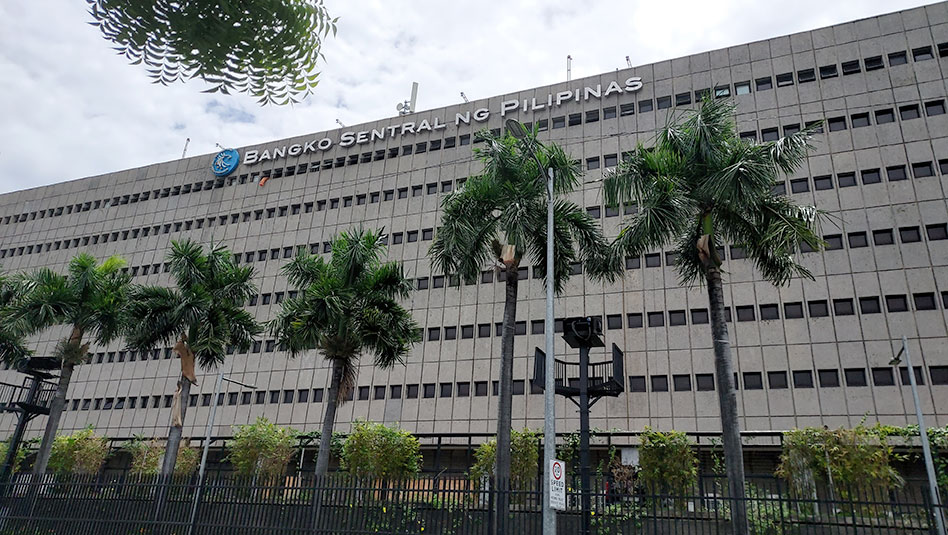




Policy Rate Updates: Closer to BSP’s Goldilocks moment
 DOWNLOAD
DOWNLOAD

Inflation Update: Speeds up but remains below target
 DOWNLOAD
DOWNLOAD

Monthly Economic Update: Fed back on track
 DOWNLOAD
DOWNLOAD


ADB keeps PHL growth forecasts unchanged

The Asian Development Bank (ADB) kept Philippine economic growth forecasts for this year and in 2025 unchanged as expected monetary easing will likely lift investments and consumption.
In its latest Asian Development Outlook, the multilateral lender said it expects Philippine gross domestic product (GDP) to grow by 6% this year, at the low end of the government’s 6-7% target.
For 2025, the ADB sees Philippine GDP expanding by 6.2%, below the government’s 6.5-7.5% goal.
“Moderating inflation and expected monetary easing in the second half of 2024 will support household consumption and investment,” it said.
The Bangko Sentral ng Pilipinas (BSP) has kept its key rate at a 17-year high of 6.5% since October 2023 to tame inflation.
BSP Governor Eli M. Remolona, Jr. has signaled the central bank could begin cutting rates by August, as inflation continues to slow.
The ADB noted that household consumption remained the main driver of Philippine growth, even as it slowed in the first quarter.
The economy grew by a weaker-than-expected 5.7% in the first quarter. Household spending, which accounts for nearly three-fourths of economic output, rose by 4.6% in the January-to-March period, the slowest since the coronavirus pandemic.
The ADB said economic expansion is also supported by low unemployment, cash remittances and faster infrastructure spending.
The multilateral lender also kept its inflation forecast for the Philippines at 3.8% this year, and 3.4% in 2025. The BSP expects inflation to settle at 3.3% this year and 3.1% next year.
FASTEST IN SOUTHEAST ASIA
The Philippines and Vietnam are expected to be the fastest-growing economies in Southeast Asia in 2024 and 2025, ahead of Indonesia, Malaysia, Singapore and Thailand.
Southeast Asia’s growth is expected to average 4.6% in 2024 and 4.7% in 2025.
“Consumption — fueled in part by stable prices and increasing tourism-related activities — continued to lift Southeast Asian economies, though tempered a bit by the tight monetary environment,” the ADB said.
An increase in infrastructure spending in the region is boosting investment demand and growth, it added.
Export recovery is also driving Southeast Asia’s growth.
The Philippines and Vietnam would also be the second-fastest growing economy in developing Asia this year and next, just behind India. India is forecast to grow by 7% this year and by 7.2% in 2025.
Meanwhile, the ADB upgraded its growth forecast for developing Asia, which comprises 46 economies in the Asia-Pacific, to 5% this year from 4.9%. The 2025 growth projection for developing Asia was unchanged at 4.9%.
“Resilient domestic demand along with improved exports and manufacturing will support growth this year,” the multilateral lender said.
The ADB also upgraded its growth forecast for developing China excluding Asia to 5.1% this year from 5%. The 5.3% forecast for next year was unchanged.
ADB Chief Economist Albert Park said in a statement that the region’s fundamentals are strong, but policy makers should “pay attention to a number of risks that could affect the outlook.”
“Policy uncertainty related to elections in major economies, particularly the US, clouds the outlook,” the ADB said.
“Heightened geopolitical tensions — including potential escalations in the Middle East and Russia’s war in Ukraine — and trade fragmentation could once again disrupt supply chains and induce commodity price volatility.”
For China, the ADB also maintained its forecasts at 4.8% for 2024 and 4.5% for 2025.
“The (China) property slump could deepen, leading to weaker growth prospects. In addition, adverse weather conditions and climate change impacts could threaten crop production,” it said.
The robust global demand for electronics, especially for semiconductors used for high-technology and artificial intelligence applications, is seen driving export growth in several Asian economies, the ADB said.
The Philippines and Vietnam, which specialize in integrated circuit packaging and electronics assembly, stand to benefit from the semiconductor boom, the ADB said.
“One positive development is that El Niño has ended and La Niña, which tends to bring cooler temperatures and more rain to parched areas, such as in Southeast Asia, could begin during the latter half of this year,” it said. — Beatriz Marie D. Cruz
This article originally appeared on bworldonline.com





 By BusinessWorld
By BusinessWorld